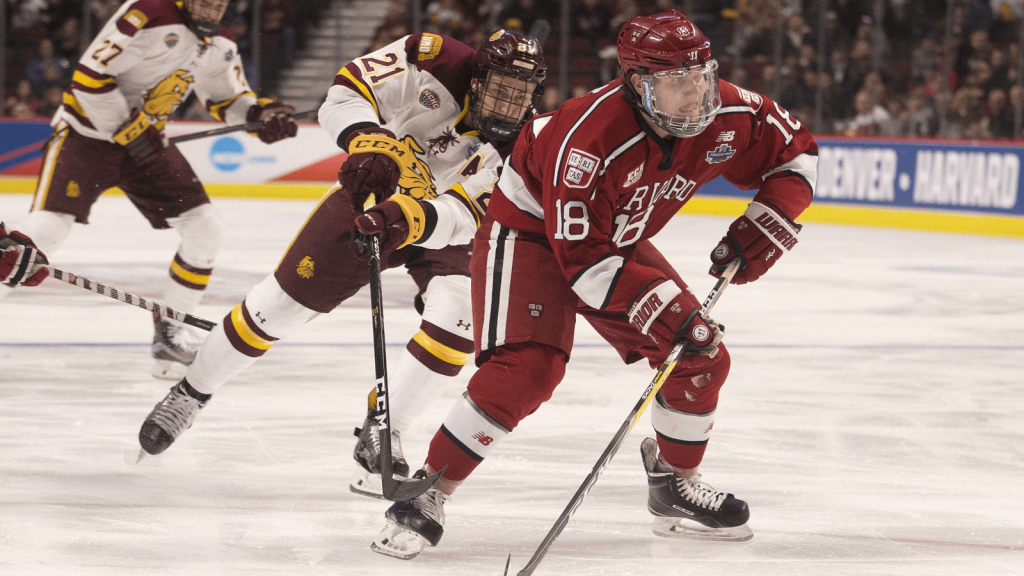Without the stars of tournaments past, Sweden trusts in depth for WJC’s
Team Sweden won’t have the star-studded lineup with household names and top draft picks we saw in Buffalo last year. Instead, Sweden will be operating as more of an underdog, sending to Vancouver and Victoria a team but from the blueline out that will need to rely on depth and speed to be successful.
There’s no doubt this year’s Swedish squad doesn’t have the same amount of high-level talent as we’ve seen in the past. Last year’s group featured Elias Pettersson, who will likely win rookie of the year in the NHL this season, Lias Andersson, a seventh overall pick of the New York Rangers, and Alexander Nylander, another top NHL pick who had already dominated the tournament in previous years.
That team would go undefeated through the group stage, knock off a pesky Slovakian team in the quarterfinal and take down the tournament-favourite American squad in the semifinal before losing a tight 3-1 game to Team Canada. You could easily make an argument that Sweden was the better team in that game, but they came up just short.
Coming up just short — that’s been the story for Sweden over the past decade at the tournament. Since 2009, Sweden has won just one gold medal, which came in 2012, and they’ve lost in the final four times. Interestingly enough, it’s only the playoffs in which the Swedes have struggled to find success. While they’ve won gold just once this decade, they’re currently riding a 44-game winning streak in the group stage play that dates all the way back to an overtime loss against the United States in 2007.
So while the Swedes won’t be sending their most star-studded, exciting roster to the tournament this year, they’re still a very, very difficult team to count out.
Sweden will be led by a strong blueline at this year’s tournament. While the loss of Timothy Liljegren, a first-round pick of the Maple Leafs back in 2017 who will miss the tournament due to an injury he suffered playing in the AHL, Sweden has plenty of depth to compensate.
Adam Boqvist, the eighth-overall pick of the Blackhawks in 2018 who is currently operating at above a point-per-game pace in the OHL, and Erik Brannstrom, the 15th-overall pick of the Golden Knights in 2017, are both dynamic puck-movers who will play large roles on this Swedish team. Rasmus Sandin, a first-round pick of the Maple Leafs from 2018 and Liljegren’s teammate in the AHL, will be looked upon to take on a bigger role in his teammate’s absence. Philip Broberg, a top prospect in the upcoming NHL draft, will also look to capitalize on the opportunity that Liljegren’s injury has afforded him, as he wasn’t originally expected to make the team.
As I said earlier, Sweden doesn’t have the same high-level talent up front as we’ve seen in the past, so some unexpected names will have to step up in order for them to have success. Sweden did get a big boost when Isac Lundstrom, a first-round pick of the Ducks in 2018, was let go by the team in order to participate in the tournament. Perhaps Sweden’s strength will be playing a fast, tight, defensively responsible game to go along with their dynamic blueline, as two of their key forwards, David Gustafsson and Jacob Olofsson, both thrive playing a two-way game.
The last time the Swedes won the tournament was in 2012. That group found success with a remarkable blueline, featuring talent like Oscar Klefbom, Jonas Brodin, and John Klingberg. If this year’s Swedish team wants to surprise at the World Juniors and push through, they’ll need their deep, talented blueline to dominate the same way that group did back in 2012.

